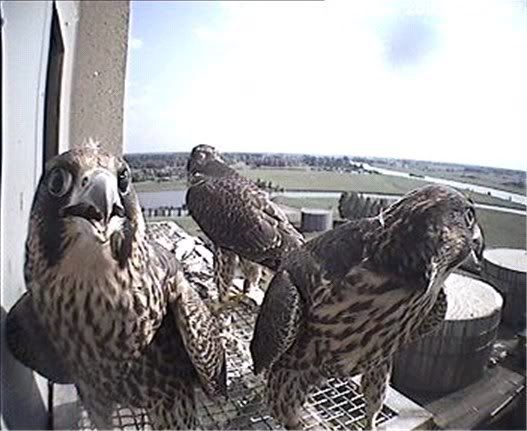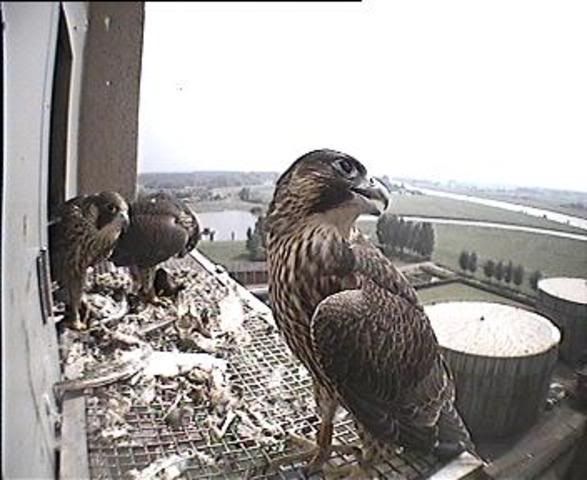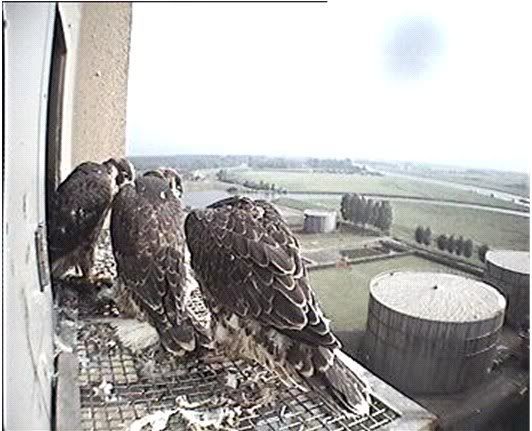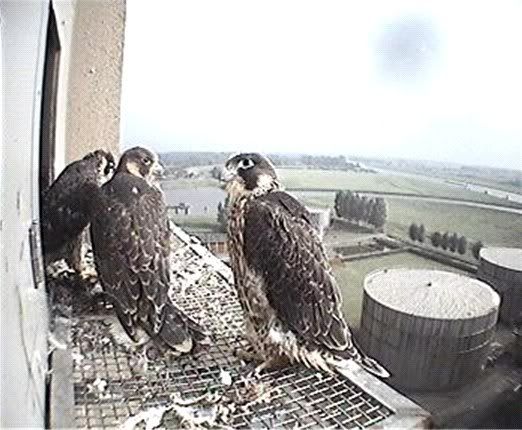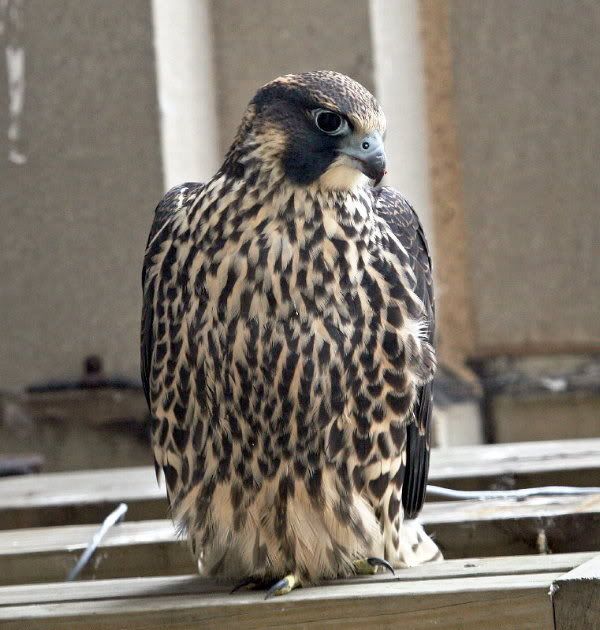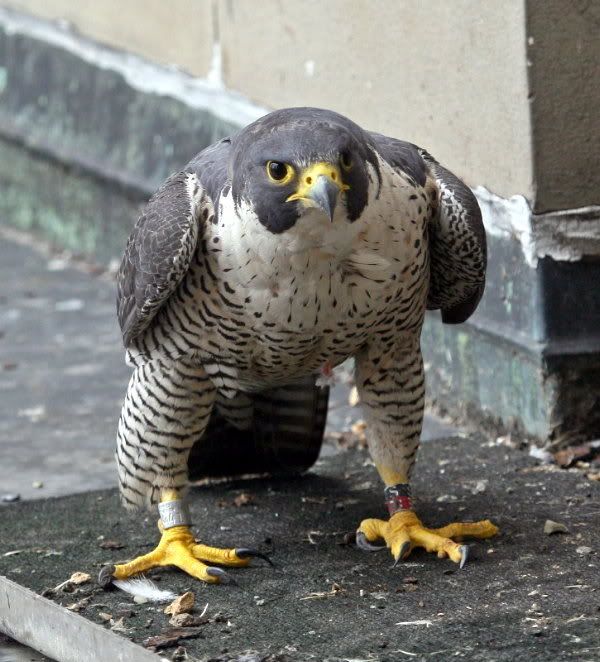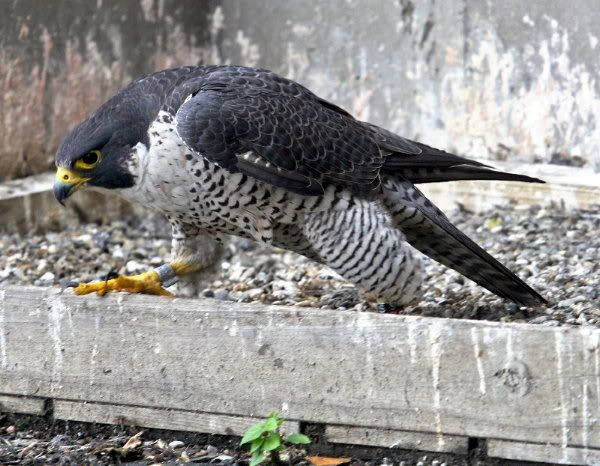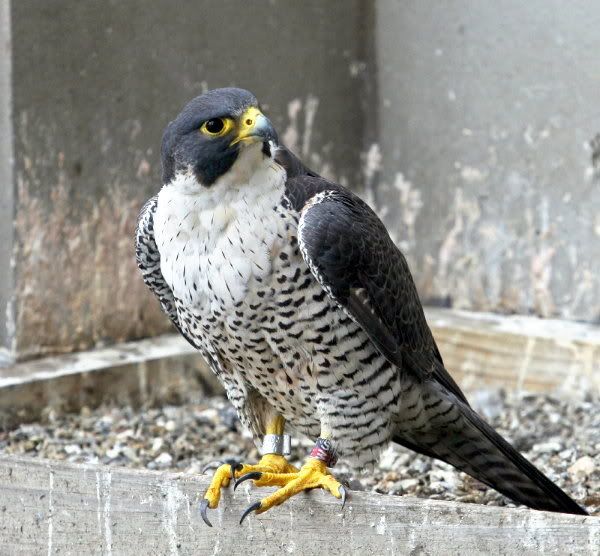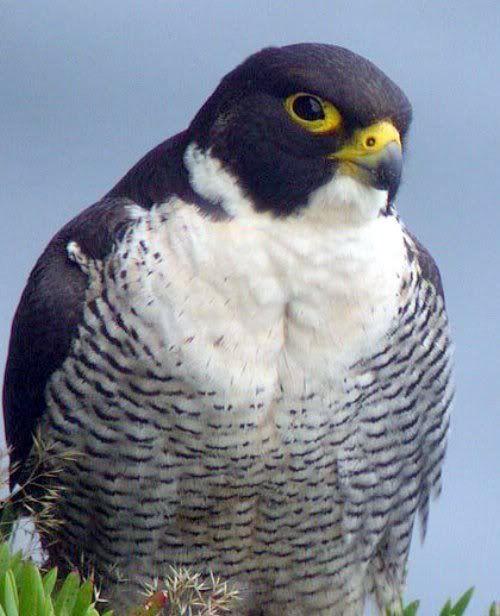
After the breedingseason has winded down in the Northern Hemisphere things are getting on the road "Down Under". The Australian breeding season is getting started. There are 2 nestsites that have webcams overthere. The one in Brisbane or Frodocam. And one in Anglesea on the Alcoa plant.
Australia is something else. A beautiful continent which is totally different from the rest of the world. Flora and fauna have species that only live in Australia, like the Kangeroo, Platypus, Koala, Huntsman spider and Brush tailed possum. And Australia has it's own 2 Peregrine falcon subspecies as well: the Falco peregrinus macropus and Falco peregrinus submelanogenis.
Peregrine Falcons occur just about anywhere in Australia, from the coast to the Outback and from the tropical north to the temperate south. Even in arid interior, they can be seen around billabongs and permanent waterholes.

Peregrines have lived in Australia for a long time. Their fossil remains have been found in Pleistocene deposits dating to about 1.85 million years ago. A study of deposits found at a cliff where Peregrines nest in Tasmania discovered that the oldest deposits were laid down about 8600 years ago.
Falco Peregrinus Macropus
The main subspecies on the Australian continent is the F.p. Macropus. It can be found througout Australia except the southwest. That is the territory of the other subspecies F.p.submelanogenis.
The macropus differs from the subspecies in Europe and de US/Canada in many ways. The peregrine falcon we know in Europe is the Falco peregrinus peregrinus. And the one in the US/Canada is the Falco peregrinus anatum.
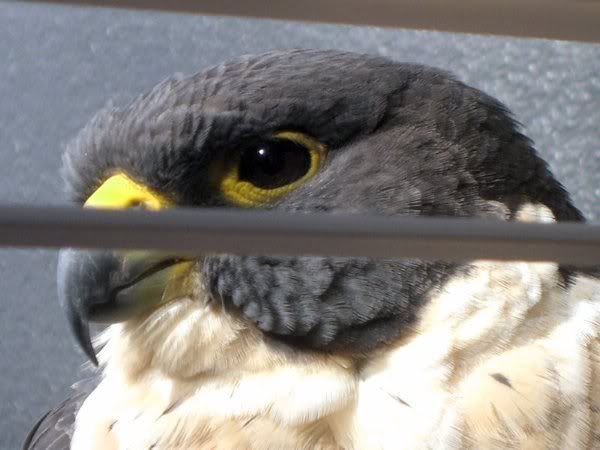
We are used to a peregrine with a darkgreyblue head with more or less white stripes in the throat and neckarea. Some Northern peregrines even have a white stripe of feathers just above the cere.
Australian peregrines have a totally different head. It is covered by a darkgreyblue-blak cap. Its back is a dark slaty grey, throat white and the rest of the underparts white to buff with narrow black bars. They are medium-sized (0.5 m), stocky, deep-chested birds of prey (raptors) with long, narrow, tapering wings. Compared to our peregrines the Macropus has very big feet.
The juvies are similar but upperparts vary from chocolate brown to brown and underparts buffy with blackish streaks (vs. bars).
In Australia, the Peregrine falcons occur across the continent (except on treeless, waterless plains) and are present on many offshore islands. Some, like Frodo and his mate, have even joined the population drift into major towns and cities.
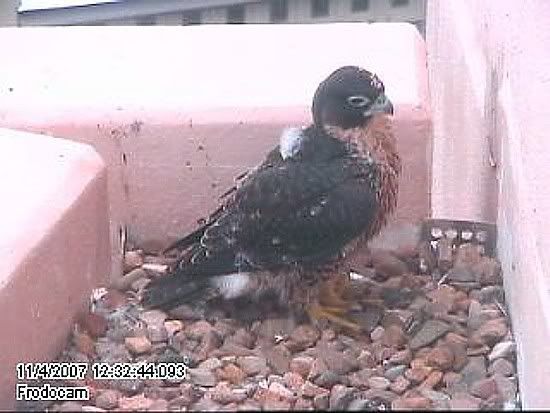
There is probably nowhere in the Greater Brisbane Region that Peregrine Falcons cannot be seen and several breeding pairs reside here. Although Peregrines can be seen widely, a few birds account for all sightings. Like all 'top predators', they are uncommon and highly territorial.
The total world Peregrine population is thought to number 12,000–18,000 breeding pairs. 3000–5000 of them live on the Australian mainland and in Tasmania. The Queensland population has been estimated at around 950 breeding pairs (approx. one pair per 1800 sq km) with 25–35 pairs in South-east Queensland (6–10 pairs in the Greater Brisbane Region).
Each pair permanently holds and defends an area of land (territory) from other Peregrines. The size of the territory varies according to quality of the habitat and availability of prey. This explains why there may be as many as one pair per 30 sq km or as few as one pair per 14,000 sq km in different parts of Australia.
The Brisbane falcons
We all know and love Frodo and Frieda. What magnificent raptors they are. We have been enjoying the imgaes from Frodocam in the past years and looking forward to this new season 2008.
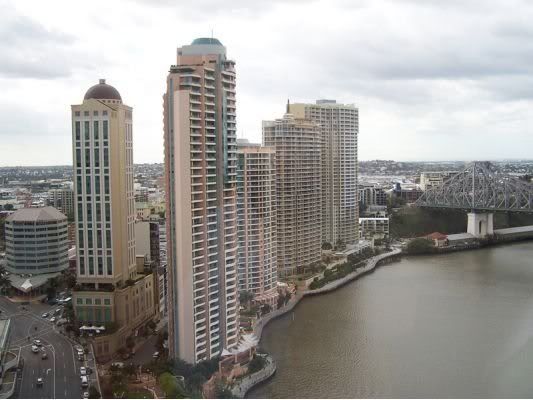
Peregrines may be new addition to the Admiralty Towers residential block, but they are not new to the CBD! Brisbane joined the list of cities around the world that have breeding pairs on tall buildings and skyscrapers sometime during the mid-1970s, when a pair took up residence on the MLC Building (George and Adelaide Streets).
A pair, but not necessarily the same individuals, has been living in the CBD ever since. During the past decade, they have nested on Sheraton Building where they also attracted a great deal of attention.
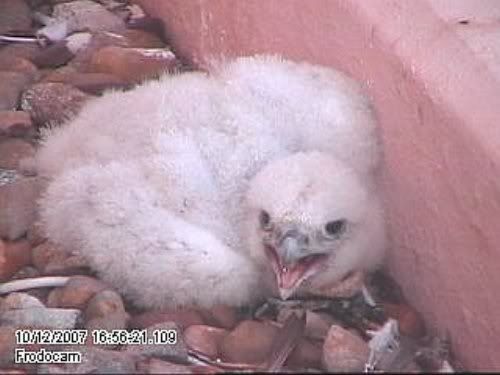
The pair has now moved to the Admiralty Towers, probably because of the number of tall buildings rising around their former residences. On the other hand it may simply be that the ledges of their new home are far more attractive.
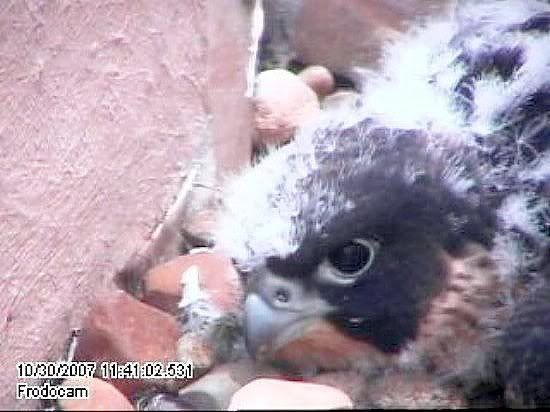
Last year the first egg was laid on august 18, the second and third on 8/20 and 8/22The first eyas hatched on 9/25 and the second on 9/26. The third egg did not hatch and was disposed off by Frida. Sadly one of the eyases died due to heat exposure on 10/4. The heat of the sun is deadly for an unprotected eyas. The little one laid all afternoon of 10/3 in the burning sun and died. Very awfull.
The other one however survived and grew up to a very lovely little well nourished chicklet. Loved by the world! It fledged savely in the early morning of november 5.
The Alcoa falcons
This nestiste is on the Alcoa plant in Anglesea near Melbourne in Victoria. The risiding peregrines are Sheila and Havoc.
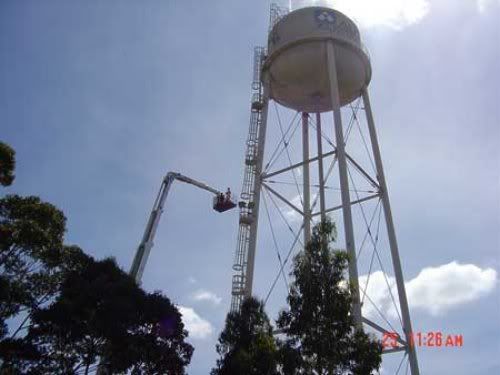
Alcoa Anglesea has been home to a pair of Peregrine Falcons since 1991. This webcam is showing images from a special nest box that environmental staff at the site built and installed in 2004 on the site’s water tower. The height and aspect of this structure mimics
the preferred natural nesting environment of this species. Normally Peregrines can be found nesting on sheer cliff faces.
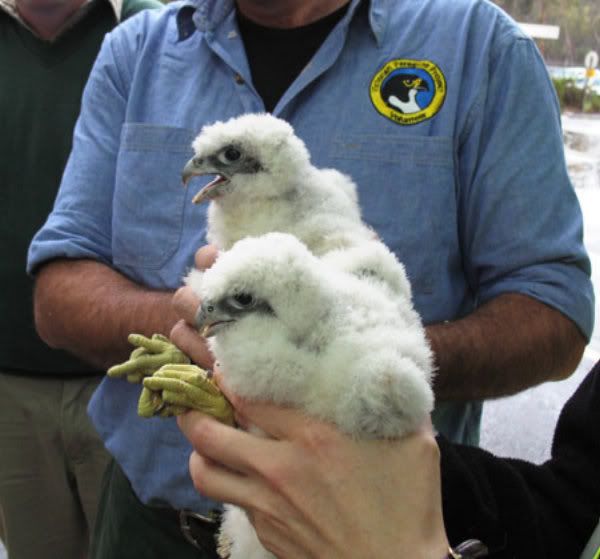
The most serious threats facing Peregrines in Victoria are illegal persecution and the continuing loss and disturbance of suitable nest sites. Only 3% of Peregrine nests found in Victoria are on man made structures, so Alcoa Anglesea is pleased to be able to provide a safe and secure site for this pair of Peregrine Falcons.
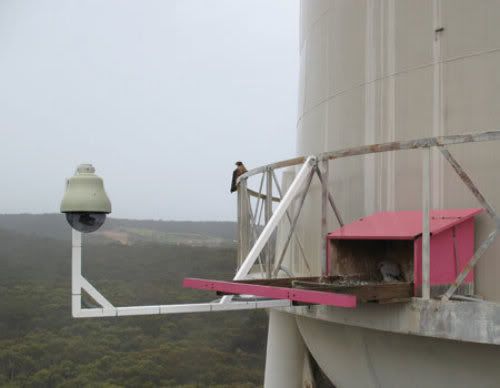
Alcoa has an ongoing interest and involvement with Peregrine Falcons in Victoria, with both the Anglesea and Point Henry sites working alongside the Victorian Peregrine Project (VPP) to assist with research and conservation of the species. This work is part of the environmental management work underway at each Alcoa site
to reduce our environmental footprint and promote conservation.

Last season Sheila laid her first egg on august 25 and had completed her clutch of 4 by August 28. On October 1 the first eyas hatched, and on october 3 the second one emerged. But the other 2 eggs did not hatch. So just 2 beautiful eyases. They grew up without any problems.
On October 25 both little ones were banded and named. Weighing in at a very healthy 905g was the young falcon, Dash, with all the characteristics to be as formidable as her mother.More reserved and weighing in at 590g was the little tiercel, Concorde.
Concorde fledged on November 10 and his sis followed a day later.
Both were well and accounted for when the cams closed.
So we are at the brink of a great new season. Of course daily reports of both nestsites will be on this Blog.

